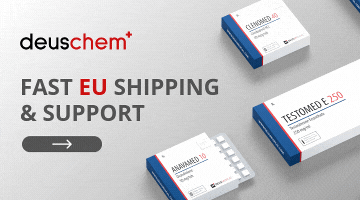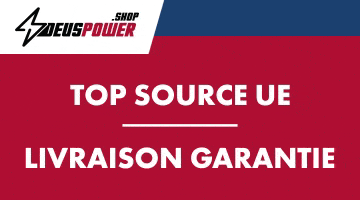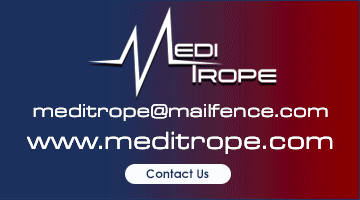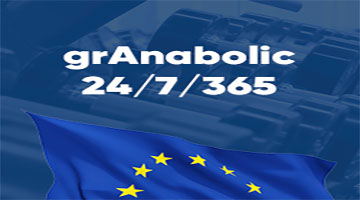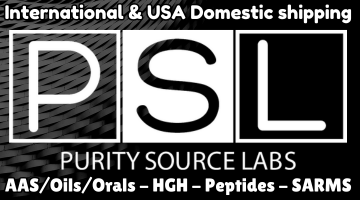45 Day PCT Cycle. Never seen dosing like this?
--------------------------------------------------------------------------------
Please translate these. I found this on differnet site. This guy saying things ive never heard before????? Especially the part under METHODS
HPGA Normalization Protocol After Androgen Treatment
N Vergel, AL Hodge, MC Scally
Program for Wellness Restoration, PoWeR
Objective Results Discussion
To develop an approach to cycle androgens that would
result in significant changes in body composition and
accelerate the normalization of the hypothalamic
pituitary gonadal axis (HPGA) after cessation of
androgens.
Methods
An uncontrolled study of 19 HIV-negative eugonadal
men, ages 23 – 57 years, administered testosterone
cypionate and nandrolone decanoate for 12 weeks,
and then were treated simultaneously with a combined
regimen of human chorionic gonadotropin (hCG) (2500
IU/QODx16d), clomiphene citrate (50 mg PO BID x 30d)
and tamoxifen (20 mg PO QD x 45d), to restore the
HPGA.
Mean FFM by DEXA increased from 64.1 to 69.8 kg
(p<.001); percent body fat decreased from 23.6 to 20.9
(p<.01); strength increased significantly from 357.4 lb
to 406.4 lb (p=.02). No significant changes in serum
chemistries and liver function tests were found. HDL-C
decreased from a mean value of 44.3 to 38.0 (p=.02).
Mean values for luteinizing hormone (LH) and total
testosterone (T) were 4.5 and 460, respectively prior
to androgen treatment. At the conclusion of the 12-
week treatment with androgens the mean LH <0.7
(p<.001) and total testosterone was 1568 (p<.001). The
mean values after treatment with the combined
regimen were LH=6.2 and testosterone=458.
The use of androgens has been reported to improve
lean body mass, strength, sexual function, and mood
accompanied by side effects caused by continuous
uninterrupted use of these compounds (polycythemia,
testicular atrophy, hypertension, liver dysfunction
[oral androgens] and alopecia.) Androgen-induced
HPGA suppression causes a severe hypogonadal state in
most patients that often require an extensive period of
considerable duration for normalization. This prevents
most if not all individuals from cycling off these
medications due to the adverse impact of this state on
their previously gained LBM and quality of life. The
protocol of hCG-clomiphene-tamoxifen was successful
in restoring the HPGA within 45 days after androgen
cessation. Further controlled studies are needed to
determine if these results can be duplicated in HIV-
positive subjects.
Patient General Characteristics
Mean SD Range
Age (yrs) 36.4 9.6 23-57
Height (cm) 179.3 10.3 152.4-198.1
Weight (kg) 87.7 9.8 71.7-106.6
BMI (kg/m2) 27.5 4.7 22.3-42.8
Mean Hormone Levels During Program
Initial Day 30 Day 90 Final Change P
Mean SD Mean SD Mean SD Mean SD Mean SD
T 459.5 224.4 1568.0* 551.6 1262.9* 551.6 457.9 206.7 -1.6 17.7 NS
LH 4.5 1.9 <0.7* - <0.7* - 6.2 5.5 1.7 3.6 NS
* P<.001 to initial value.
Serum Chemistry
Initial Final Change P
Mean SD Mean SD Mean SD
BUN 20.1 5.5 20.7 6.2 0.6 0.7 NS
ALKP 75.8 15.4 65.6 20.1 10.2 4.8 .005
ALT 37.1 23.9 42.3 35.9 5.2 12.0 NS
AST 32.8 14.4 38.9 25.7 6.1 11.4 NS
Chol,Total 191.2 45.5 185.3 39.5 5.9 6.0 NS
Mean Body Composition & Strength
Initial Final Change P
Mean SD Mean SD Mean SD
Fat (%) 23.6 7.2 20.9 4.8 2.8 2.4 .02
Weight (kg) 87.7 9.8 91.5 9.2 3.8 0.6 .001
Fat Free Mass (kg) 64.1 7.3 69.8 7.7 5.7 0.3 .001
Fat (kg) 23.4 7.0 21.6 5.0 1.9 1.9 NS
article tirer sur anabolex
--------------------------------------------------------------------------------
Please translate these. I found this on differnet site. This guy saying things ive never heard before????? Especially the part under METHODS
HPGA Normalization Protocol After Androgen Treatment
N Vergel, AL Hodge, MC Scally
Program for Wellness Restoration, PoWeR
Objective Results Discussion
To develop an approach to cycle androgens that would
result in significant changes in body composition and
accelerate the normalization of the hypothalamic
pituitary gonadal axis (HPGA) after cessation of
androgens.
Methods
An uncontrolled study of 19 HIV-negative eugonadal
men, ages 23 – 57 years, administered testosterone
cypionate and nandrolone decanoate for 12 weeks,
and then were treated simultaneously with a combined
regimen of human chorionic gonadotropin (hCG) (2500
IU/QODx16d), clomiphene citrate (50 mg PO BID x 30d)
and tamoxifen (20 mg PO QD x 45d), to restore the
HPGA.
Mean FFM by DEXA increased from 64.1 to 69.8 kg
(p<.001); percent body fat decreased from 23.6 to 20.9
(p<.01); strength increased significantly from 357.4 lb
to 406.4 lb (p=.02). No significant changes in serum
chemistries and liver function tests were found. HDL-C
decreased from a mean value of 44.3 to 38.0 (p=.02).
Mean values for luteinizing hormone (LH) and total
testosterone (T) were 4.5 and 460, respectively prior
to androgen treatment. At the conclusion of the 12-
week treatment with androgens the mean LH <0.7
(p<.001) and total testosterone was 1568 (p<.001). The
mean values after treatment with the combined
regimen were LH=6.2 and testosterone=458.
The use of androgens has been reported to improve
lean body mass, strength, sexual function, and mood
accompanied by side effects caused by continuous
uninterrupted use of these compounds (polycythemia,
testicular atrophy, hypertension, liver dysfunction
[oral androgens] and alopecia.) Androgen-induced
HPGA suppression causes a severe hypogonadal state in
most patients that often require an extensive period of
considerable duration for normalization. This prevents
most if not all individuals from cycling off these
medications due to the adverse impact of this state on
their previously gained LBM and quality of life. The
protocol of hCG-clomiphene-tamoxifen was successful
in restoring the HPGA within 45 days after androgen
cessation. Further controlled studies are needed to
determine if these results can be duplicated in HIV-
positive subjects.
Patient General Characteristics
Mean SD Range
Age (yrs) 36.4 9.6 23-57
Height (cm) 179.3 10.3 152.4-198.1
Weight (kg) 87.7 9.8 71.7-106.6
BMI (kg/m2) 27.5 4.7 22.3-42.8
Mean Hormone Levels During Program
Initial Day 30 Day 90 Final Change P
Mean SD Mean SD Mean SD Mean SD Mean SD
T 459.5 224.4 1568.0* 551.6 1262.9* 551.6 457.9 206.7 -1.6 17.7 NS
LH 4.5 1.9 <0.7* - <0.7* - 6.2 5.5 1.7 3.6 NS
* P<.001 to initial value.
Serum Chemistry
Initial Final Change P
Mean SD Mean SD Mean SD
BUN 20.1 5.5 20.7 6.2 0.6 0.7 NS
ALKP 75.8 15.4 65.6 20.1 10.2 4.8 .005
ALT 37.1 23.9 42.3 35.9 5.2 12.0 NS
AST 32.8 14.4 38.9 25.7 6.1 11.4 NS
Chol,Total 191.2 45.5 185.3 39.5 5.9 6.0 NS
Mean Body Composition & Strength
Initial Final Change P
Mean SD Mean SD Mean SD
Fat (%) 23.6 7.2 20.9 4.8 2.8 2.4 .02
Weight (kg) 87.7 9.8 91.5 9.2 3.8 0.6 .001
Fat Free Mass (kg) 64.1 7.3 69.8 7.7 5.7 0.3 .001
Fat (kg) 23.4 7.0 21.6 5.0 1.9 1.9 NS
article tirer sur anabolex




